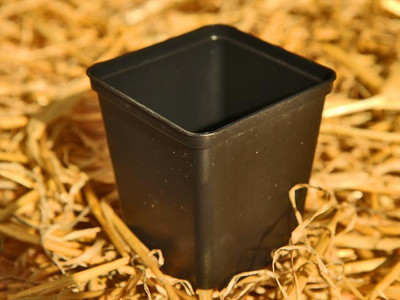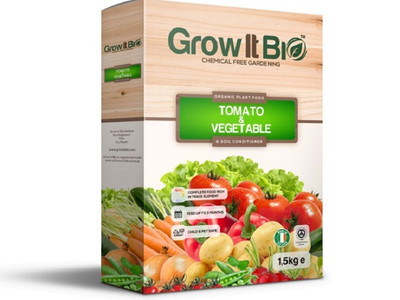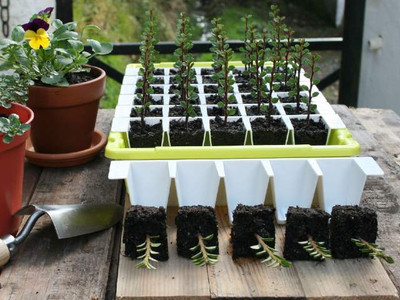Vegetable Seedling Care Guide
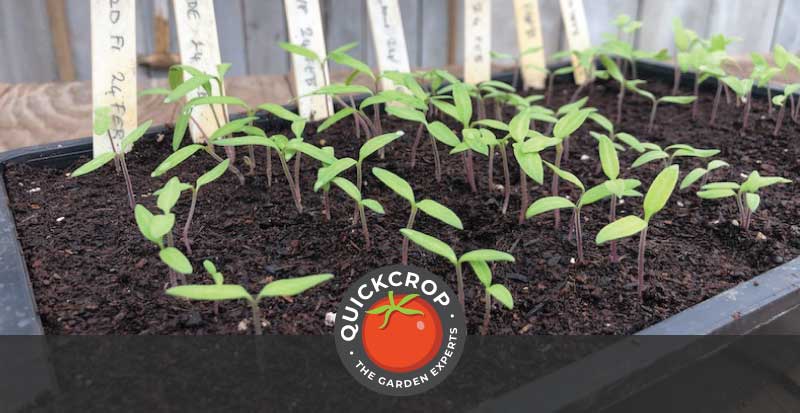
The end of March and early April is approaching prime seed sowing time if we are starting indoors in
seed trays or pots (for planting outside in May). I think we covered timing already but, as a rule of thumb, most outdoor vegetable crops will be ready to plant out 4 weeks after sowing.
We have looked at sowing and growing in seedling trays already, but this week I want to cover looking after seedlings in more detail, especially what to do if your plants are ready but you are not able to plant out.
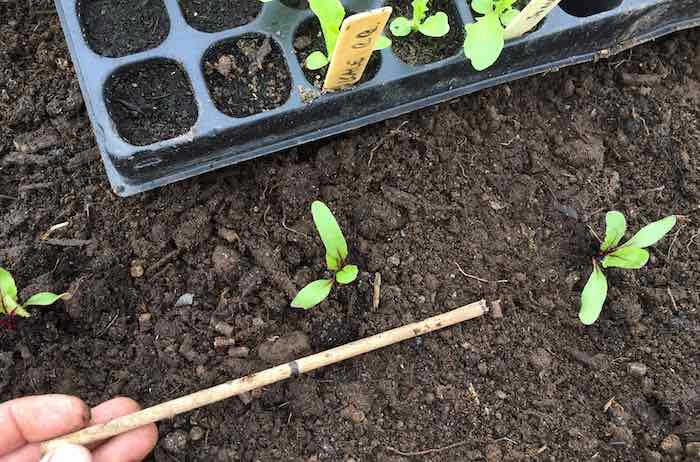
The most likely reason you will need to delay planting seedlings outside is the weather. Traditionally the end of April or early May is about right, but in recent years spring is becoming colder and wetter for longer. Unfortunately this is likely to be a recurring trend, and it means we have to take extra care when planting seedlings or delay for a week or two. It also makes a covered growing area seem more essential than ever.
The main problem with delaying planting is roots becoming constricted in the plant cells and/or the plants running out of nutrients, but there are a number of things you can do to manage this as follows:

Plant nutrition
Most vegetable seedlings sown in modular trays are in a cell about 4cm wide and 5.5cm deep. The compost in this cell will provide 4-5 weeks of nutrients, after which time the seedlings will need some extra feed if they are not going in the ground.
A light feed of around half the recommended dose of tomato feed will keep the seedlings going. We want to give the minimum possible to avoid a growth spurt (which will further restrict plant roots in their cells), but just enough to keep the plants growing.
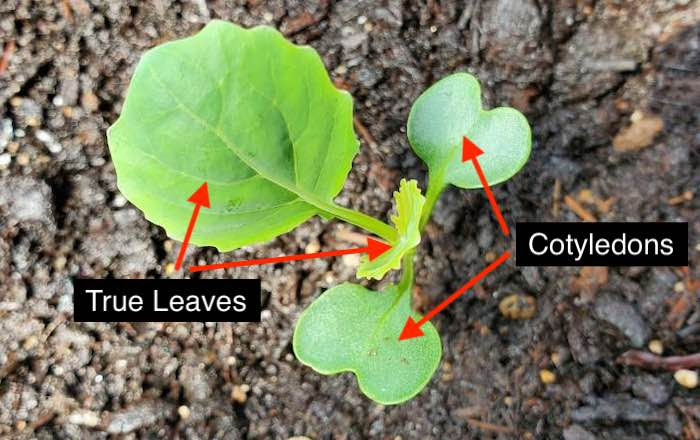
By the way, we often get questions about seedlings where the lower leaves are yellowing: this is completely normal. The first set of leaves or 'cotyledons' naturally yellow and drop off once the secondary or 'true leaves' take over. If the first (lowest) set of leaves are yellow there is no cause for concern, but if the rest of the leaves are yellowing, the plants do need a feed.
Planting out onions
One of the issues we have is that, for the most part, plants are better off in the ground than they are in pots or trays. In some cases, e.g. for onions sown indoors in February, it may be necessary to plant outside even if the weather is against us. I had quite a few onion seedlings in trays which were starting to get cramped so, in dry spells between hail showers, I decided to plant them out.

As we will go into in more detail below, horticultural fleece is your April saviour. However, I didn't want my fine leaved onion seedlings to be flattened by wet fabric under hail and rain. The solution was to attach some old fence rails I had in the shed to pegs and run them the length of the beds as shown above.
The picture with the fleece on top (below) looks like we are peering into a bigger structure, but this covered area is only about 6 inches off the ground. The fleece edges are all weighed down with rocks (which I check daily for slugs hiding underneath) and all in all it makes for a pretty solid little mini-greenhouse.

I am very glad I did this, as the last 2 nights have been very stormy while, as you see, the onions look perfectly happy under their cover. By the way, the clumps of 4-5 onion seedlings are planted approx 30cm apart each way. I added a layer of well rotted garden compost before planting, which will give me a good fertile top layer of soil.
We do want to avoid adding too much manure, as this will cause fast leafy growth which can result in what's called 'thick neck'. This is where the leafy part of the onion is thicker than usual, making it slow to dry and prone to rot in storage.

Horticultural Fleece in 2m x 100m bulk rolls
View Product
Temperature
The warmer it is, the faster your plants will grow. If you are trying to hold a tray of plants before planting, they should be kept cool - so definitely not in a centrally heated room and, if you have a greenhouse or polytunnel, not inside on warm days.
I would leave trays outdoors as much as possible unless the weather is very cold, but bring them in at night if frost is forecast. The trick here is keeping plants as cool as possible while avoiding frost, rain or wind damage.
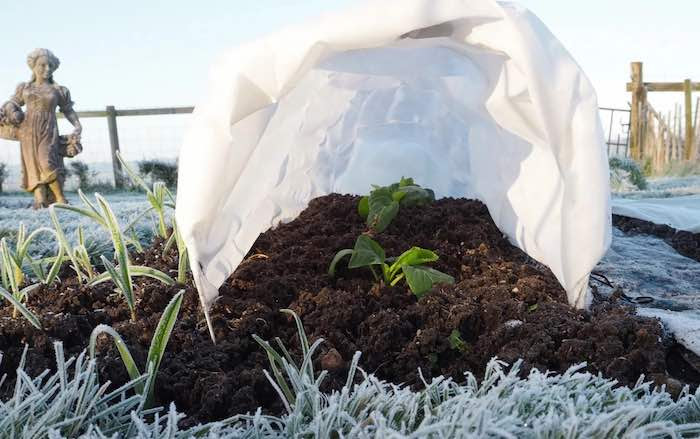
The Benefits of Fleece
Horticultural fleece is extremely useful for protecting plants at this time of year. A layer of fleece placed over a tray of seedlings will protect them from harsh weather outside and will prevent frost damage in a light frost overnight. I would advise caution if a heavy frost is forecast, as the entire rootball can freeze in the tray. In this instance I would bring them back inside.
If it is a little early to plant out (e.g. mid-April) but weather conditions are good, most outdoor seedlings can be put in the ground provide they are protected. Again fleece will do the trick. We always need to bear in mind that a spell of good weather in April is just as likely to be followed by a spell of cold, so don't wait to protect plants: cover when planting and keep them covered until May.
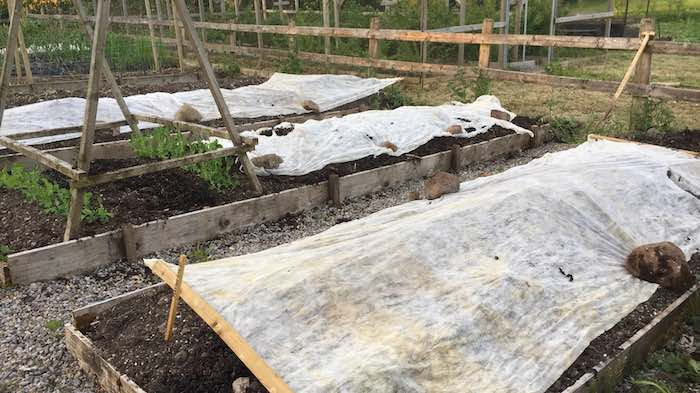
Fleece can simply be laid over the new seedlings, but take care to weigh down with large stones or bricks around the edges to prevent it flapping about (which will damage plants). Planting early using fleece can pay dividends if managed properly, and can give a head start of 2 weeks or so over seedlings planted in May.
On warm days, conditions under the fleece will be akin to the greenhouse, with the soil warming and plenty of room for roots to stretch their legs.
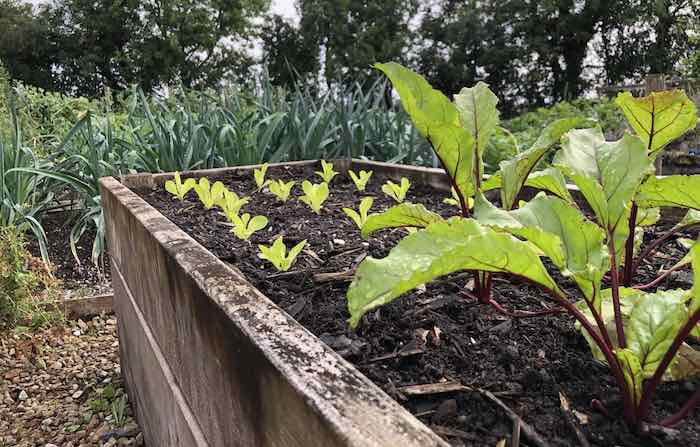
What can be planted out and what can't?
Lettuce, peas, broad beans, spinach, chard, kale, calabrese and cabbage are a lot tougher than you think. They will all easily survive a cold snap under fleece, and can be planted a little earlier than normal (mid April) if need be.
You definitely should not plant out French beans, runner beans, sweetcorn, courgette or any other tender plants as they will definitely be killed by frost and will seriously struggle in cold weather and will be unlikely to survive. This group of plants will need to be kept under protection until at least the first week in May.

Kale 'Nero Di Toscana'
View Product
Potting on
The other option, of course, is to simply pot your seedlings on to a tray with larger cells or into individual pots. I understand this option might mean purchasing more compost and pots, but very often you will have some old pots hanging around and perhaps a half bag of compost from last year.
Using old compost is fine: even if it has lost most of its nutrients, we are just giving more space for the roots to spread, and we can apply a liquid feed for extra nutrients if leaves begin to yellow.
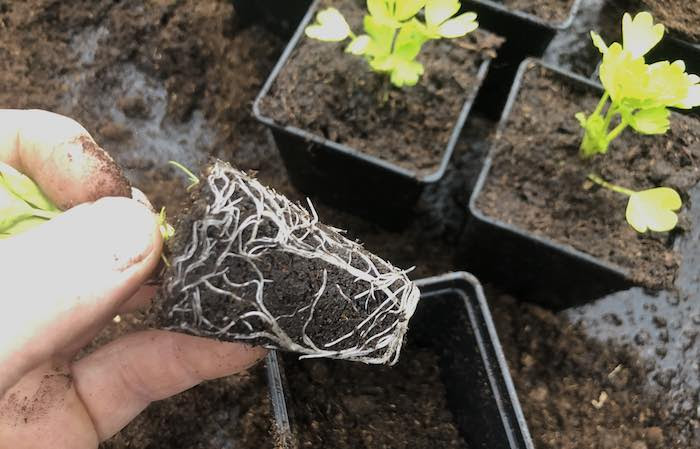
Potting on is more suitable if you have a tunnel or a greenhouse, because the more light your plants can get the better. Easy for me to say because I have plenty of pots and compost, but transferring to a larger container is my preferred option. An extra two weeks or so under cover will give you very impressive large plants, and an even better head start in the garden when you are ready to plant out.
When potting up seedlings grown in a tray of 5.5cm seedlings (e.g. in standard 84 cell trays), I would avoid using a large pot as roots will be more likely to rot. The ideal would be a larger 6 cell tray, with cells around 7cm deep. The key to potting on is that the new container should only be a little larger than the seedling root ball or plug. If you are using pots, the new pot should be within the next two sizes up.

Potting on tomato seedlings
My tomato seedlings are, for the most part, growing away happily enough. I have again noticed a marked difference in compost brands as to the performance of the seedlings, this has been the case for a number of years now.
The root of the problem is a shortage of a suitable substitute for peat; this can lead to too much woody material in the mix which locks up nitrogen and makes it unavailable to the plants. I have had the best success this year by mixing a seed compost 50/50 with Living Green wormcast compost, which gives me a nice consistency and good nutrient levels.
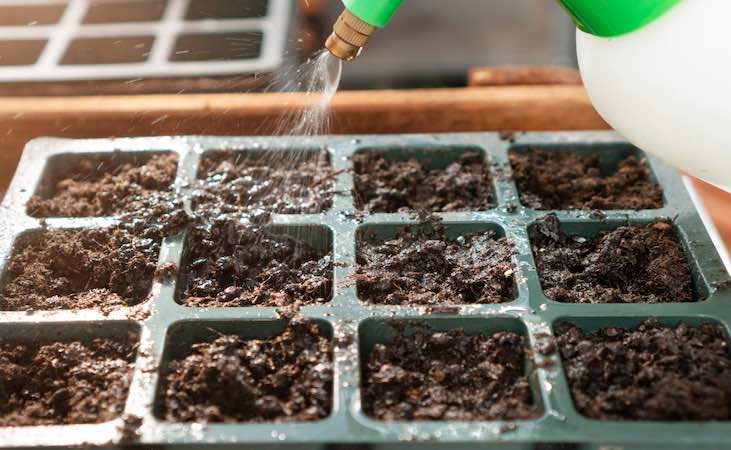
I will mess around with different composts some more this year and will do a proper report in the autumn. If your tomatoes aren't thriving in a low-nutrient compost, you can also give them a half strength dose of tomato feed to pick them up.
It is still too early to plant tomatoes directly in the greenhouse or polytunnel beds, so (as they are very vigorous growers) it is likely they will need to be potted on to a larger pot around now. The pots pictured below are 11cm Gottinger pots, which will keep these plants going for another 2 weeks.

Normally the plants would go straight into the beds at the beginning of May but, as it's been cold, I may pot on again and wait till the middle of the month.
The other thing we need to be aware of as potted tomatoes get bigger is their increased need for water. As their leaf area grows, they transpire a lot more and, on hot days, can suck a pot completely dry in no time.

Leeks in fish-boxes
The little guys above are leek seedlings which I sowed in an old polystyrene fish box about 10 days ago. Leeks or onions are funny, as they 'reverse' out of the compost bent double before straightening up, often wearing their spent seed as a hat.
I use two methods to sow leeks: either multisowing 5 or 6 seeds in each cell of a modular tray or broadcast sowing in a fish box. The clumps of multisown leeks are planted out together without separating, while the fish box leeks are planted individually.

The point of the boxes is that they hold enough compost for the leeks to grow to small spring onion size before they are planted out. The reason for going to this trouble is that the immature leeks can then be deep planted (15cm deep), which gives more of a white shaft. This is because there is more leek under the ground and, therefore, out of the light.
At planting time I will experiment with deep and shallow planting of these seedlings at the same planting distance and in the same soil to see whether there is any real advantage to this traditional practice. It may be the case that shallow (standard) depth planting will be better because there should be more nutrients in the top layer of soil, but we'll see what happens.

Deep planting
If your seedlings have had to grow in less than ideal conditions before planting out, and have got a bit tall and gangly-looking, remember that in many cases your planting method can bring them back around. 'Deep planting' refers to planting a significant part of the stem in the soil (usually up to the first set of leaves), which transforms a lanky seedling into a nice stocky plant.
Some plants are better than others at this. Tomatoes are particularly well suited, as they quickly produce new roots on their buried stems. However nearly all other vegetables can be treated this way. The exception are plants with tender stems like lettuce, which will be prone to rot if covered.
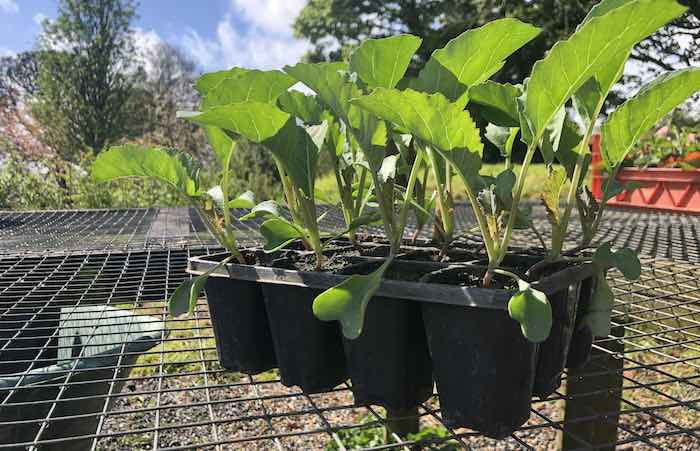
A note on Brassica family plants
You will also be surprised just how much punishment most members of the brassica or cabbage family will take and still produce a very nice crop. I would be more careful with cauliflower or Brussels sprouts, but cabbages can be left almost for dead with no feed and constricted roots for weeks: they will still take off like a rocket when they are planted in the soil.
I am not saying you should torture your plants on purpose, but if cabbage or kale plants have gone past their best you needn't worry: they will make a full recovery.

